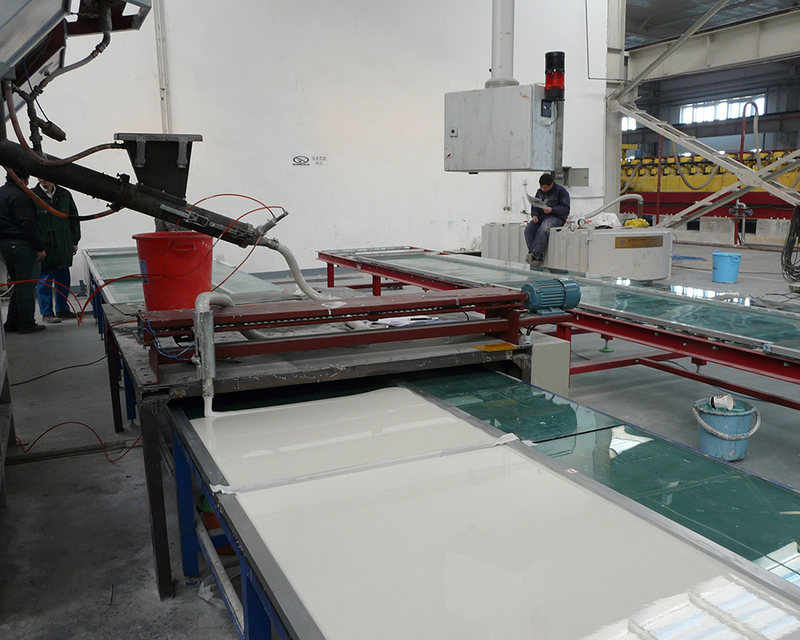Artificial stone casting machine
Artificial stone casting machine
- Product Details
Technical parameters of ALT1020-S artificial stone casting machine
1, the amount of casting: 10-20kg/min
2, filler particle size ≤ 5mm
3, the maximum amount of casting: 20kg
4, Power: 15KW 3X380V 50HZ
5, compressed air consumption: 0.4 ~ 0.7 Mpa about 100L/min
6, a set of 50L initiator metering device
7, a set of basic color measurement device, 20L storage tank
8, an automatic cleaning device
9, PLC system: flow calibration function, fault alarm, recipe storage, operation equipment operation function 4 menu
10, Resin., Filler (quartz sand, stones, fine powder, etc.), particles, pigments have automatic metering system, initiator system (curing agent, accelerator) injected by the gun, the accuracy of up to 0.01%, 24 hours continuous casting , Computer remote control monitors every aspect of production, system memory, a variety of formulations.
Artificial stone casting machine | |||
Project Introduction | The artificial stone continuous casting production line automatically feeds, Resin, ATH, pellets, and pigments are supplied separately. Initiator systems (curing agents, accelerants) are injected from the gun, with an accuracy of 0.01%, continuous casting for 24 hours, and computer remote monitoring. Every link. With more than 250 system memory ratios, customers can design their own according to their needs. Artificial stone continuous casting standard casting amount 10-20Kg/min (a plate can be cast in 1-2 minutes). Compared with the batch production line, the screw can be filled with more filler through high-temperature mixing, the plate thickness error is ±0.1mm, the sanding thickness process can reduce the sanding amount by 50-60%, and the sheet-sheet can save raw materials by 3-5Kg, saving manpower. 2/3. Gel time shortened from 15-25 minutes to six or seven minutes. The pattern of continuous casting production is uniform and stable, and the texture is vivid, completely overcoming manual arbitrariness. Continuous casting line is suitable for mass production. | ||
Advantage | |||
Types of | Manual production | Automatic casting machine production | |
production methods | Manual weighing→stirring→deaeration in vacuum box→artificial injection into mold (simultaneous vibration) | A casting machine completes all the above processes | |
Raw material costs | Low viscosity of resin mixture, resin accounted for 30 to 33% | Resin content 20 to 25% | |
quality | There are pinholes on the surface of the pores, mold removal need to make up the plastic grinding, requires the operator to have a wealth of experience, man-made factors | Smooth surface, dense, no pinholes, no need for glue repair, product quality is not affected by workers | |
Curing efficiency | Man-made stone production uses more moving parts. Workers increase efficiency by adding more solidifying agents and demoulding as soon as possible, causing product quality problems. | After the curing agent is set, the addition amount is stable and is not affected by human factors. | |
Labor cost | Class 6 production | Only 3 people | |
Productivity | Weighs 15kg pots for at least 10 minutes, but also cleans tools, mixing tanks, etc. | Casting machine weighing 15kg pot only 1 minute, a time difference of 10 times | |
Raw material loss | To clean up the mixing barrel and the resin mixture of the stirrer, each barrel must be cleaned. Causes waste of labor and raw materials | 8 to 10 hours of production, just open the cleaning button, will automatically clean | |
Automated manufacturing | Artificial need to move the mold, labor intensity | Pipeline operations, automated production workers do not need to move the mold | |
Workshop image | The manual production process is backward and the quality is not easy to control | High automation production efficiency, low cost, buyers are assured of quality | |
